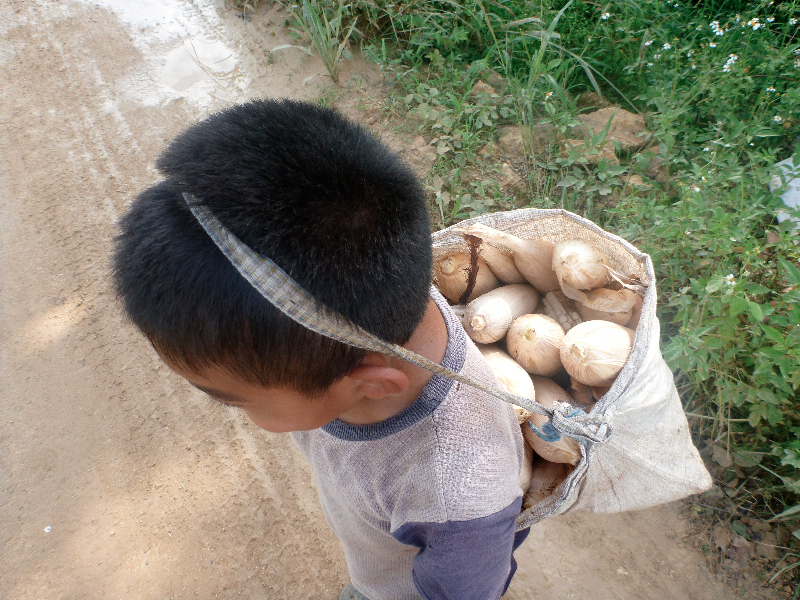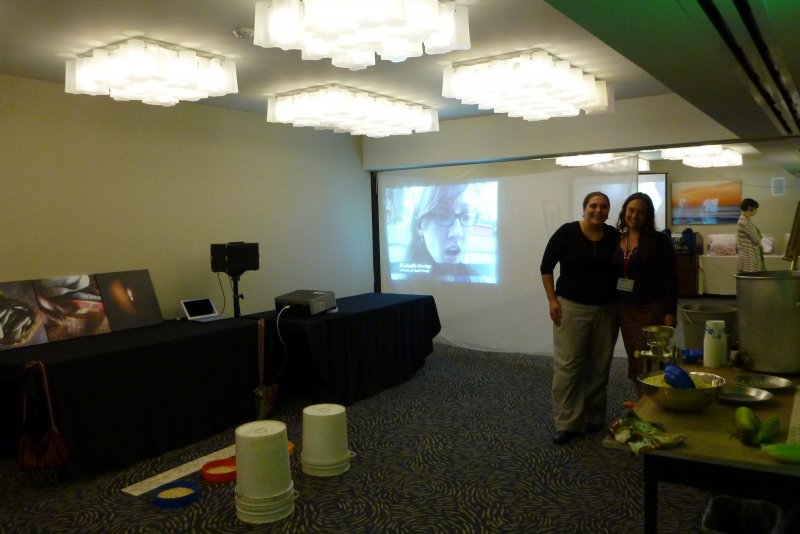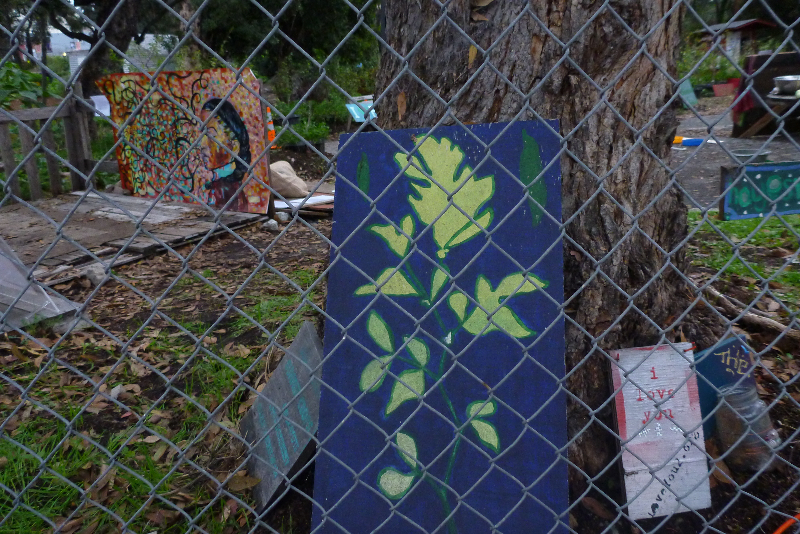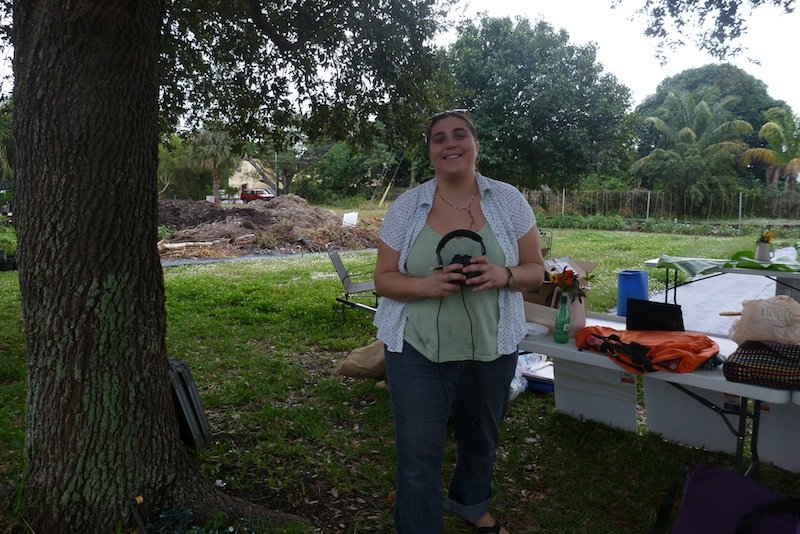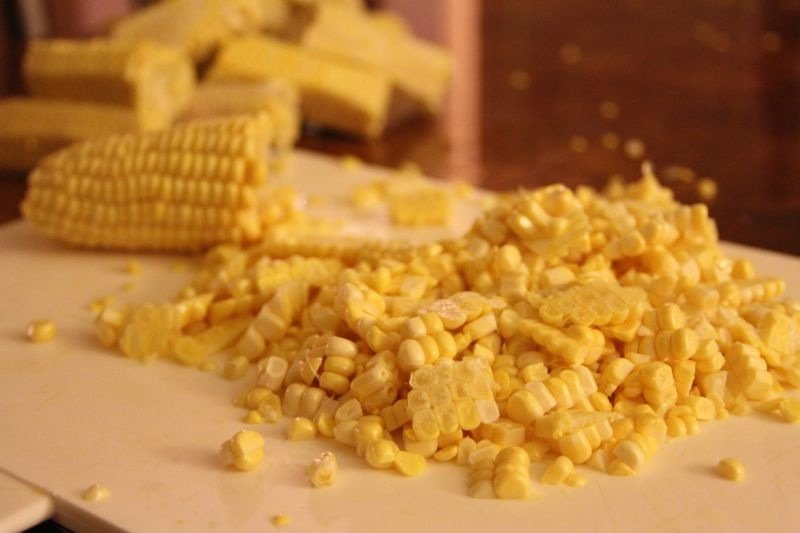Crossing Traditions
Embodying Ecology Through Experiential Art
Making tortillas, and much of the work in this subsistence farming community, is critical to daily life, reflecting an intimate connection between a healthy body and the natural environment it interacts with and learns from. Traditional activities, or those that people trace back to what “Maya people do,” are critical not simply because they are valued in the community or because they provide a healthy, local source of food. They are critical because practicing them actually changes individual bodies through phenomenological experience. Heightened sensory experience changes us, both mentally and physically. Experiencing traditional activities, through everyday ritual, can make us well.
“Embodied ecological heritage” was conceived in response to the lack of ways to adequately conceptualize the links between a healthy body (and mind) and traditional ecological knowledge and practice. It takes into account gaps in existing discussions and conceptualizations surrounding the health/TEK link, extending beyond ethnobotanical intersections toward a richer understanding of how bodies change through ecological interactions.
Kristina Baines
The “Organizers”
The “Artists”
His video installation “Maya Corn Cry” focuses on Belizean resistance of economic imperialism through GMO seed burning and highlights Maya communities and their traditions, which have transcended centuries of onslaught of international homogeneity.
She has become aware of the patterns in life and of the way they have presented themselves. Only through photography can she put order to the rhythms in her life. Her perspective is that of scientific documentation abstracted to create an intimacy with the viewer. In her photographs, the subjects take on an aesthetic connection through their patterns, geometry and snapshot color palette. She presents the significance they have to a specific moment, and chooses to present them as a delicate and beautiful arrangement of elements.
Moana gives much eternal appreciation to her parents, her familia, friends and her comunidad all over the world for supporting her, encouraging her, and listening for the gold. She loves to eat with her hands, go barefoot absolutely anywhere in the world, her harmonica named Smoothie and Boxing & Beatboxing, both with a capital “B.” She loves that she is growing older. Life has just begun.
With this exhibit we explore the concept of embodied ecological heritage by inviting our viewers to explore how a people would develop both culturally and physically in reaction to an environment that exists only in our imagination. The concept of embodied ecological heritage was developed to explore gaps in the way we approach cultures in this world. It is in gaps such as this that the Cultures of Wonder project thrives. This is where the Thulans live. We hope that by presenting the ways in which the Thulans interacted with their environment, we will bring some awareness to the nearly limitless ways others shape and are shaped by both the real world and the countless imaginary worlds that exist inside us all.
The Cultures of Wonder Project is: Francesca Borgatta, Kirstin Cummings, Ren Dodge, Kirsten Goldberg, Damian Lanahan-Kalish, Danielle Schlunegger and Andrew Werby.
The GREENPUBES installation represents embodied ecological heritage by highlighting the legacy of environmental destruction that will be inherited by future generations unless we utilize cleaner energy sources, and human responsibility. Often the relationship between body and the environment that nourishes us is taken for granted. The installation imagines that people, preoccupied with personal issues (in this case vanity) become actively engaged in an environmental solution.
The “Community Members”
Featured in this video are members of the community of Santa Cruz in the Toledo district, Belize. Hoping to convey what inspired the development of the embodied ecological heritage framework, we asked them to describe their practices important to their lives and well-being. We hope that the connections they make will enhance the discussions provided by the academics, leading to a more holistic understanding of how embodied ecological heritage might be used in a wide variety of contexts.
Big thanks to:
Bascilio Teul, Vice-Alcalde
Florentina Pop
Elutero Mes
Martha Pop
Ezekiel Canti
The “Academics”
We gathered the pieces for this video installation from anthropologists in various stages of their careers working in applied and academic settings around the world. Hoping to share a wide range of insights, we gave them a simple request: to define the terms “embodied” and/or “ecological” and/or “heritage” as they related to their own work, and to each other. Asking them to self-record a conversational-style monologue, we hoped to convey the fluidity of the terms and concepts they represent, while capturing their personal connections and applications of our installation’s theme, “embodied ecological heritage.”
Thanks so much to:
Rebecca K. Zarger – University of South Florida
Chas Salmen – Univeristy of California – San Francisco – School of Medicine
Paige West – Tow Associate Professor – Barnard College and Columbia University
douglas carl reeser is a doctoral candidate in the Department of Anthropology at the University of South Florida, and is a contributing editor at Recycled Minds and Anthropology News. He is currently working on his dissertation based on research in southern Belize, examining the intersection of State-provided health care with a number of ethnic-based traditional medicines. He also loves food.
Kate Fayers-Kerr – University of Oxford
Kerry Hawk Lessard – Native American Lifelines
Amy McLennan is a DPhil student in Anthropology at the University of Oxford. Her attention is currently focused on the political, social and economic change that has coincided with obesity emergence in a small Pacific island nation. In her DPhil thesis she is specifically interested in the trope of ‘living for today’: what it means in daily practice, where it has come from, and how it is linked to the way in which we relate to food, money, material goods, and to each other. In her work she predominantly draws on biocultural and critical medical anthropological theory, although she also makes use of material from history, economics, epidemiology, sociology, public health and human geography.
Mabel Sabogal – University of South Florida
Hannah Graff – National Heart Forum (UK)
Elizabeth Murray – University of South Florida
We invite you to click below, as an artist and/or academic, to offer your own contribution to our ever-growing traveling and virtual exhibitions!
We are asking that you use these questions as a guideline to record a short recorded piece in which you define each of the following three terms: “embodiment” “ecology” and/or “heritage”. Pieces may be narrative-driven or a more theoretical discussion or a combination of these. They should be between 1 and 5 minutes in length and follow a very simple “speaking straight to the webcam” format. They will continue to be edited for use in future events, and online publications.
Please state your intentions to participate with a very brief (a sentence or two) description of how one (or all) of these themes (embodiment, ecology, heritage) plays out in your work.
We are asking you to use these thoughts and photographs to inspire an original piece that embodies ecological heritage and health and is relevant to this particular community of study. We are looking for highly creative and thoughtful pieces.
Please email a short description of your preliminary ideas so we can discuss how to integrate the piece into future exhibits. Please communicate with us directly about the deadline to get your work in our hands! We can facilitate the printing of your piece on canvas or some other large-format premium stock, or have the capabilities to assist in other areas of production.
AAA Abstract- Thursday November 15th 10:15am- 12:00pm
CROSSING TRADITIONS: EMBODYING ECOLOGY THROUGH EXPERIENTIAL ART
This event explains the new framework of “embodied ecological heritage” through participation in a multi-sensory experience at the border between contemporary art and anthropological practice. Participants are guided through “traditional” prescriptive activities, which they must complete to enjoy a more “traditional” gallery experience. These contrasting traditions are explored through this embodied experience. Participant observation is an essential and traditional anthropological methodology, yet it is seldom used for the dissemination of the findings from the participation. This event seeks to address this disjunction through inviting participants to embody the research knowledge before they learn of it in a more traditional art gallery style event, with an aim to bring a holistic understanding to the images and ideas brought back from the field. The event and the framework that informs it, embodied ecological heritage, are based on research in a Maya subsistence farming community in southern Belize. Traditional activities, with roots in the natural environment, are linked with ideas of wellness in a broad sense. Heritage practice becomes essential to health in the context of direct interaction with the environment. This event demonstrates this by inviting participants to cross boundaries between the sensory experience of traditional environmental practice and that of an art experience. Some borders, however, cannot be crossed and male and female participants can only glimpse at the other’s experience until reunited in the gallery space. Multiple traditions and prescriptions are presented through engagement with multiple boundaries and ecologies. The event is a collaboration between the Mopan Maya community in southern Belize, anthropologists from the universities of South Florida and Oxford and the art communities of San Francisco and Miami. It takes theoretical and practical inspiration from medical anthropology, ecological anthropology, educational anthropology, art theory and social medicine, but hopes to be of interest across disciplinary borders. Participants are asked to allow 30 minutes to complete the event.

Reconsider Dissemination: “Embodied Ecological Heritage” by Victoria Costa and Kristina Baines is licensed under a Creative Commons Attribution-NonCommercial-ShareAlike 3.0 Unported License.

